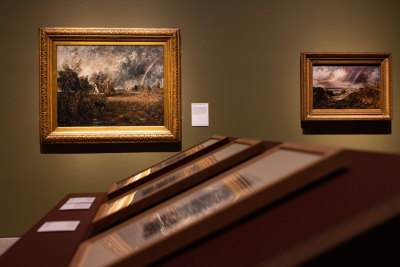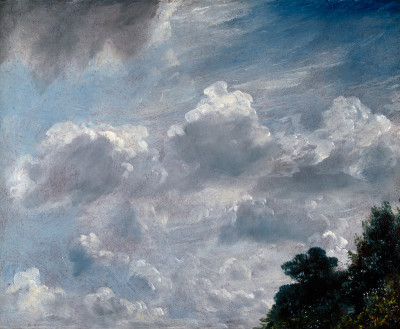RA down under
RA down under
Charles Saumarez Smith in Australia
By Charles Saumarez Smith
Published 3 March 2014
Charles Saumarez Smith, our Secretary and Chief Executive, was recently in Australia to visit ‘Genius and Ambition’, an exhibition of works from our collection on show at Bendigo Art Gallery.
-
Bendigo is a smallish city north west of Melbourne, grown fat on the profits of the gold rush and filled with the hallmarks of late Victoria civic prosperity. It has a large municipal park, a grand theatre and town hall, fine buildings as if constructed from a pattern book, and – the reason I’m here – the Bendigo Art Gallery. A few years ago the gallery came to us with the idea of doing an exhibition of works from the Royal Academy’s collection. The result, entitled Genius and Ambition, is open until June, and very good it is too (at least I think so).
Of course, I know intellectually that the RA has a fine collection, but, because we never see it hung together, it is hard to appreciate its full range and the way that it is possible to tell the history of British art from it. So it’s a treat to be here in Bendigo and see the full range of the collection, beginning with John Singleton Copley’s 1782 painting, The Tribute Money, and Joshua Reynolds’ ceiling painting for the library at Somerset House. I only hope that we can achieve half the effect of narrative coherence when we install the new upstairs gallery in Burlington Gardens in 2017.
It’s also a great pleasure to see the extent to which the RA influenced Australian painting in the late nineteenth and early twentieth century. During that period, the RA played a significant role in the careers of two of the so-called Australian Impressionists: Tom Roberts trained at the RA Schools, and Arthur Streeton (who in 1891 became the first Australian-born artist to exhibit at the RA) held a solo show here in 1900.
As well as seeing works from the RA Collection on show in Bendigo, this trip to Australia has enabled me to visit several other extremely impressive galleries in the cities of Melbourne and Canberra. A particular highlight has been the works by John Glover hanging upstairs amongst the early Australian landscapes at the National Gallery of Australia. I spent a lot of that day being shown around by Ron Radford, the gallery’s director. I remember not liking it when I last came here, fifteen years ago, because of its neo-brutalist architecture, designed in the early 1970s and not opened until 1982. But Ron seems to have learned to live with the huge, high-ceilinged spaces and concrete walls. He has restored the original sculpture gallery with its slate floor, filling the concrete niches with Indian sculpture, putting in softer concrete walls, and even added to it in a way which is deliberately sympathetic to the original, with a new wing which opened three years ago to house the aboriginal collection.
-
Selected works from Genius and Ambition

Clarkson Stanfield RA, On the Scheldt near Leiskenshoeck: a Squally Day, 1837.

Charles West Cope RA, The Council of the Royal Academy selecting Pictures for the Exhibition, 1875, 1876.

John Constable RA, A Boat Passing a Lock, 1826.
-
I was also incredibly impressed by the National Gallery of Victoria in Melbourne. The oldest public museum in Australia, it opened in 1861, not long after London’s V&A and National Portrait Gallery. It started with a room full of casts of the Elgin Marbles and employed Sir Charles Eastlake PRA, Director of the National Gallery, as advisor on acquisitions. Their casts were all chucked out in the 1950s, as were their grand statues of Victoria and Albert. Looking at the pattern of acquisitions made possible by philanthropist Alfred Felton, I’m very impressed by how intelligently the gallery’s art advisors were able to buy: Robbie Ross recommended the acquisition of works by William Blake in 1920; Sydney Cockerell advised in the late 1930s; and Kenneth Clark made a particularly good set of acquisitions in the period immediately after the second world war when works of art were cheap. Mary Woodall was the advisor in the 1960s and recommended the acquisition of David Hockney’s The Second Marriage when he had only just left the RA.
The RA’s links with Australia are of particular personal interest, in part because my great-grandfather was Archbishop of Sydney. Having done some research, I managed to discover that his father (my great, great-grandfather) was called Richard Snowden Smith. He served in the rifle brigade and fell in love with a girl who could not decide whether to marry him or his best friend. They agreed between themselves (she does not seem to have had any say in the matter) that whichever of them should swim fastest across Guernsey Bay would marry her. Richard won and his oldest son, William, assumed as a middle name the surname of his father’s vanquished best friend, which was Saumarez. It’s a Guernsey name.
William was appointed Archbishop of Sydney in 1890 and set sail for the colonies with his seven daughters and my grandfather, Hubert. He must have been strongly evangelical because I once met a very high church Australian who said that it was my great grandfather who had ruined the church in Australia. He lived at Bishopscourt in the suburbs of Sydney, liked cricket and botany, and was buried in a grand mausoleum in Waverley Cemetery above Bondi Beach, where I sometimes think maybe I could be buried too. But hopefully not until I’ve been back to Australia at least a few more times.
This is an edited collation of Charles’ writings from Australia. To read more, and find out what else Charles has been up to, please visit his personal blog.






